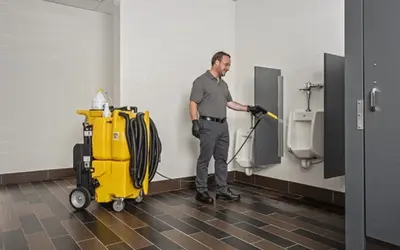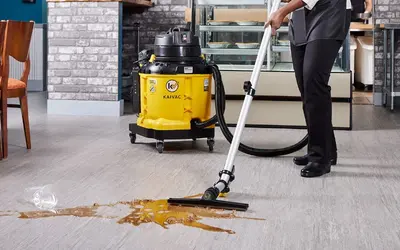Tips for School Project Cleaning

Custodians clean schools every day. But summer break lets them clean deeper. Without the constant stream of students, staff, and parents moving in and out of the building, janitors are free to tackle the big project cleaning and maintenance tasks without fear of interruption.
However, to be successful, school project cleaning requires planning, coordination, and a detailed accounting of tools, supplies, and necessary personnel. Here’s how to get your school project cleaning off to the right start.
Stay on Task
Start your school project cleaning with a thorough assessment of every space. Look closely at fixtures, furniture, and finishes and judge what can be cleaned or repaired and what needs replacing.
Create a list of projects to be completed over the summer. A classic list, borrowed from Cleaning & Maintenance Management Magazine, includes common jobs like:
- Scrubbing, stripping, and refinishing floors
- Deep cleaning carpet
- Performing high and low dusting
- Cleaning vents and grilles
- Removing and washing blinds
- Replacing lights, cleaning light covers
- Washing windows
- Replacing ceiling tiles
- Washing walls
- Painting walls
- Scraping ink and gum from surfaces
- Scrubbing trash and recycling bins
- Clean showers, lockers, and gym areas
Your buildings may have different project cleaning needs, depending on age, type of materials, and day to day cleaning schedules. If the project cleaning lists seems daunting that may be a signal to boost routine cleaning during the year.
Know Everyone’s Schedule
Scheduling project cleaning is a multi-part exercise. Facility managers must know what projects will be completed over the summer (see list above) and schedule workers to complete the task. Resources like the ISSA Clean Standard: K-12 will help budget the amount of time needed for any given project cleaning task. Be sure to add in extra time for unexpected delays, vacation plans, and sick days.
Worker schedules are only part of the task. School buildings may not be teaming with activity, but these valuable assets rarely sit empty all summer long. Rooms are often used over break to host summer classes, camps, or conferences.
Coordinate with administration when creating your project cleaning list. If possible, request they restrict activities to one part of a building at a time. This allows your staff to work on empty areas without worrying about delays or student safety. When taking a room out of service for maintenance, be sure to add in extra time at the end to let paint dry and floor finishes cure.
Finally, coordinate air conditioning and ventilation schedules. Your school’s HVAC personnel may have lined up summer projects of their own that require turning off systems. Finding this out right before performing a high-moisture task like floor stripping or carpet extraction will lead to longer drying times, accelerated mold growth, and unhappy workers.
Upgrade Tools to Start Clean/Stay Clean
Summer project cleaning is a great time to clean and repair maintenance tools. It is also a good time to assess standard cleaning processes. For example, if grouted restroom and locker room floors are taking too much time to restore it might be time to move to a better process.
Explore a No-Touch Cleaning® system from Kaivac. This technology fully removes dirt and germs from every surface. Floors, walls, fixtures, and even stubborn grout are completely restored after project cleaning and beyond.
If your schools is moving towards a green cleaning program, look at machines like the AutoVac Stretch™ from Kaivac. Perfect for wide-area hard surface floors, the AutoVac Stretch cleans 25,000 square feet per hour while using 75% less water and 66% fewer chemicals than other technology. It also costs much less than an autoscrubber.
Related Posts

Cherokee County School District Takes Cleaning into Their Own Hands With Kaivac
Each of the district’s six high schools maintained their restrooms with a No-Touch Cleaning system from Kaivac.
Read more
Coffee House Cleaning with UniVac
Read more